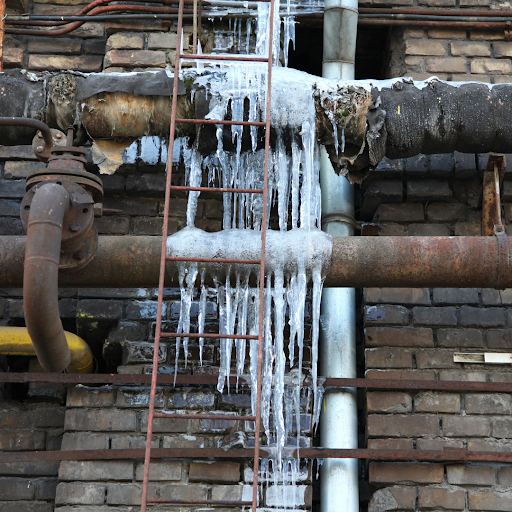How do you feel about Helpful Tips to Prevent Frozen Pipes this Winter?

Cold weather can ruin your pipes, especially by freezing pipes. Right here's exactly how to avoid it from occurring and what to do if it does.
Introduction
As temperatures drop, the danger of frozen pipelines rises, possibly causing pricey repair services and water damage. Understanding just how to avoid icy pipes is essential for homeowners in chilly climates.
Avoidance Tips
Shielding susceptible pipelines
Wrap pipelines in insulation sleeves or use heat tape to secure them from freezing temperature levels. Focus on pipelines in unheated or exterior locations of the home.
Heating methods
Maintain interior areas sufficiently warmed, especially areas with plumbing. Open up closet doors to enable cozy air to flow around pipelines under sinks.
How to identify icy pipes
Search for decreased water flow from taps, uncommon smells or noises from pipes, and noticeable frost on revealed pipelines.
Long-Term Solutions
Structural adjustments
Consider rerouting pipelines far from exterior wall surfaces or unheated areas. Add extra insulation to attic rooms, basements, and crawl spaces.
Updating insulation
Purchase top quality insulation for pipelines, attics, and walls. Correct insulation assists keep constant temperature levels and minimizes the risk of frozen pipes.
Securing Outside Plumbing
Garden hose pipes and exterior faucets
Detach and drain pipes garden tubes before wintertime. Install frost-proof spigots or cover outdoor faucets with shielded caps.
Understanding Frozen Pipelines
What creates pipes to ice up?
Pipes ice up when revealed to temperature levels below 32 ° F (0 ° C) for prolonged durations. As water inside the pipelines ices up, it increases, taxing the pipeline wall surfaces and possibly creating them to break.
Threats and damages
Frozen pipes can result in water system interruptions, property damage, and costly repair work. Burst pipes can flooding homes and create substantial architectural damages.
Indications of Frozen Pipeline
Identifying icy pipelines early can avoid them from bursting.
What to Do If Your Pipes Freeze
Immediate actions to take
If you suspect icy pipelines, keep taps open up to eliminate pressure as the ice thaws. Make use of a hairdryer or towels soaked in warm water to thaw pipes gradually.
Final thought
Preventing icy pipelines requires positive measures and quick responses. By comprehending the reasons, indications, and preventive measures, house owners can protect their plumbing throughout winter.
5 Ways to Prevent Frozen Pipes
Drain Outdoor Faucets and Disconnect Hoses
First, close the shut-off valve that controls the flow of water in the pipe to your outdoor faucet. Then, head outside to disconnect and drain your hose and open the outdoor faucet to allow the water to completely drain out of the line. Turn off the faucet when done. Finally, head back to the shut-off valve and drain the remaining water inside the pipe into a bucket or container. Additionally, if you have a home irrigation system, you should consider hiring an expert to clear the system of water each year.
Insulate Pipes
One of the best and most cost-effective methods for preventing frozen water pipes is to wrap your pipes with insulation. This is especially important for areas in your home that aren’t exposed to heat, such as an attic. We suggest using foam sleeves, which can typically be found at your local hardware store.
Keep Heat Running at 65
Your pipes are located inside your walls, and the temperature there is much colder than the rest of the house. To prevent your pipes from freezing, The Insurance Information Institute suggests that you keep your home heated to at least 65 degrees, even when traveling. You may want to invest in smart devices that can keep an eye on the temperature in your home while you’re away.
Leave Water Dripping
Moving water — even a small trickle — can prevent ice from forming inside your pipes. When freezing temps are imminent, start a drip of water from all faucets that serve exposed pipes. Leaving a few faucets running will also help relieve pressure inside the pipes and help prevent a rupture if the water inside freezes.
Open Cupboard Doors
Warm your kitchen and bathroom pipes by opening cupboards and vanities. You should also leave your interior doors ajar to help warm air circulate evenly throughout your home.

Hopefully you liked our topic about Preventing and dealing with frozen pipes. Thank you so much for taking the time to browse our article. Remember to pause to share this blog post if you liked it. I enjoy reading our article about How To Avoid Freezing Pipes.
Click Here!
 Anna Chlumsky Then & Now!
Anna Chlumsky Then & Now! Barret Oliver Then & Now!
Barret Oliver Then & Now! Lark Voorhies Then & Now!
Lark Voorhies Then & Now! Christina Ricci Then & Now!
Christina Ricci Then & Now! Suri Cruise Then & Now!
Suri Cruise Then & Now!